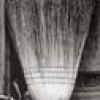
Posted
This is an example score derived from one of the tutorials you've probably already seen. I spent two or three hours refining and editing it, to make it more suitable for a presentation of Synfire.
I had no idea how to call it, or what it would actually represent. Therefore I wonder what you might think.
If you close your eyes while listening to this music and imagine a movie scene, what do you see?
Thu, 2014-11-13 - 09:48 Permalink
Thanks for your feedback. Very interesting.
I knew the mood was undecided. On the one hand it's dynamic and dark, on the other hand it's light and gentle, outright optimistic I would say (maybe because of the moving harmony). To be honest, I just worked my way forward, trying to get something that demonstrates what can be done with Synfire in a few hours.
That's what distinguishes a pro from an amateur: The amateur composes something and asks what it might be good for. The pro is told what it is supposed to be good for and then composes accordingly ;-)
Learning to compose something is one thing. Learning the culture and conventions of musical language and being able to control it is an other. What I have observed with many Synfire users lately is they are kind of falling in love with what they are suddenly able to produce (me included), only to recognize there is even more to learn, namely how to translate this new vocabulary into language.
I'd say that's a wonderful challenge to have!
It's "put to life," not "put to live."
Of course, thanks.
Thu, 2014-11-13 - 22:11 Permalink
i hear something like: wasn't here....not there either..where is my keys ..think think..
then i saw a crow running - skipping on last 3 timpani hits shiny keys on the mouth...
and then two quick hands catch the crow
and there was a lot of funny and mysterios camera movements zoom ins/outs, blurs nad re- focus too.
thats my scetch scenario :)
last:
Someone was out of breath but the song is breathing.
I Love it !
Sat, 2014-11-22 - 12:40 Permalink
Here's the original document for everyone to examine and play with :-)
I followed one of the easiest workflows with Synfire: Created a texture in the root container and introduced incremental changes in sub containers.
Most film scores consist of many short passages that build on a common theme. If I were to compose a film score, I would set up one global rack for the film and compose multiple arrangements per scene. These are lean and fast to open for copy/paste, so each scene can easily borrow motifs and textures from other scenes.
Fri, 2014-11-28 - 09:39 Permalink
Naked women, all clawing to get at me... oh wait a minute, that's what I see in the clouds too.. nice work though. It's funny how just something of a audio hint, can set people going.. I recently did a piece, using u-he software.. Aalto made this odd artifact of 'chirping' every once in a while.. I noticed it, but didn't think it was worth the work of modifying the patching or silencing that or softening that section of the one track...
Well everyone loved 'the birds''.. Somehow in peoples' minds they became plural.... I only hear one.. go figure. Now if I could just make the sound, that generates the thought 'send me money' I'd be all set..
Mon, 2014-12-01 - 13:10 Permalink
Here's the original document for everyone to examine and play with
I finally got round to having a look at this, and I have a couple of questions please:
- For many of the instruments (e.g. Violins 1 & 2) I can't see where you've defined Interpretation. Where is it defined and how do you find it?
- What is the effect of the Shift parameter? If I delete it, it doesn't seem to make any difference.
Thank you!
Mon, 2014-12-01 - 19:02 Permalink
I just try an answer, André certainly will correct me, if necessary:
1. As far as I can see, most instruments do not have a specific interpretation setting. They just use the predefined standard setting (The dark green LED's indicate that the settings are inherited, in this case inherited from the predefined standard setting).
2. The Shift parameter probably shall introduce mild varying timing shifts for the notes to breathe some more life into the performance. But I must admit that I also do not hear any difference. At least with Windows GM sounds.
Mon, 2014-12-01 - 20:14 Permalink
Correct, except the default Interpretation is set in the root container for all instruments (container defaults "track"). This is an easy way to deploy one Interpretation to all Instruments.
Check the switch View >> Parameter Explanations and double-click on Interpretation on the parameter block. This will show a text explainig where the parameter is set.
Shift is used here to achieve a humanizer effect with pulling notes a little early to compensate for the slow sound attack. I also used per sound latency adjustment with the EWQL device description.
Mon, 2014-12-01 - 20:20 Permalink
What still amazes me everytime I play around with orchestral music is how so few simple figures can build such a rich and full sound. I reckon it's the harmony. This is where Synfire really excels.
If all harmony is set to a plain C Major chord, there's still a nice texture, but all the richness is gone.
Mon, 2014-12-01 - 20:58 Permalink
except the default Interpretation is set in the root container for all instruments (container defaults "track"). This is an easy way to deploy one Interpretation to all Instruments.
Ah yes, I see. Very interesting. I really should use the "container defaults track" more often.
What still amazes me everytime I play around with orchestral music is how so few simple figures can build such a rich and full sound. I reckon it's the harmony. This is where Synfire really excels.
Absolutely. Synfire is the world's first software that can make wine from water. :thumbsup:
Mon, 2014-12-01 - 22:31 Permalink
Thanks for all the explanations, I'll check the view option to see if it helps.
I must admit though that after almost 2 years of using Synfire, I still get confused by some of the terminology. For example, "container defaults track". I'm sure if I go away and think about it some more I'll understand it, but it's not something that comes easily.
So if there's no Interpretation, is that the same as the setting 'general purpose default'? I've always thought it important to set Interpretation correctly, per instrument, but perhaps I'm going wrong there?
Regarding the shift parameter, I've never used it and don't understand how to. I think some of these more obscure parameters need some sort of tutorial, because it seems to me that a few words in the manual is not enough to be able to take full advantage of Synfire's power.
Tue, 2014-12-02 - 01:45 Permalink
I still get confused by some of the terminology. For example, "container defaults track"
Well, "container defaults track" is probably not an official term and it's not really a track. You can access to these container default values, if you click in the arrangement view at the container name that is displayed directly above the first instrument (track). The parameter settings you can see there are valid for all instruments in that container unless the individual instruments have their own specific setting.
So if there's no Interpretation, is that the same as the setting 'general purpose default'?
I was wrong, there IS an interpretation setting. It is stored at the default settings in the root container. Click at the root container and then click at the container name above the first instrument as I have described before. The interpretation setting that you will find there is valid for all instruments that do not have their own setting.
I've always thought it important to set Interpretation correctly, per instrument, but perhaps I'm going wrong there?
Usually, the default settings of the interpretation parameter work fine for all instruments. I change that settings only if I want to achieve specific effects. For example you can change the voice leading strategy to "Weak" if you want to have more dissonances. Or you can determine what should happen when your figures exceed the playing range of the instrument. But I have also projects where I have touched the interpretation parameter not at all.
Tue, 2014-12-02 - 09:33 Permalink
Synfire is the world's first software that can make wine from water.
Oh what a wonderful statement. If it wouldn't possibly offend religious feelings, I'd love to use it as a user quote ;-)
Otherwise, yes: Less is more. It is so tempting to overload an arrangement with stuff, while the most simple and sparse patterns already sound great.
I had a hard time naming the "container defaults", lacking any better term for it. Hidden behind the container name, it's also not placed very intuitively. Suggestions are welcome.
Did you know you can even put a figure in there and all instruments will play it? You can do pretty powerful and destructive things with the defaults.
One weakness of Synfire currently is the defaults can't be applied to selected instruments only, because every container includes all instruments. It would be great to have a "Strings" group, for example, and set a default for that group only. One of the many things on our list for the future.
Tue, 2014-12-02 - 13:09 Permalink
I had a hard time naming the "container defaults", lacking any better term for it. Hidden behind the container name, it's also not placed very intuitively. Suggestions are welcome.
Why don't you simply write "Container Default Parameters" instead of the container name. The container name of the selected container is visible at the highlighted container anyway, so this is redundant information. And make it look like a button to make it more obvious that one can click there.
Did you know you can even put a figure in there and all instruments will play it? You can do pretty powerful and destructive things with the defaults.
Yes, I knew that. Since yesterday, when I tried it out. It's really fascinating that even after over 3 years of using Synfire there are still new things to discover. I now found out that the container defaults are also mentioned in the manual. But this can easily be overlooked, especially because there is no information how to get to the container defaults.
One weakness of Synfire currently is the defaults can't be applied to selected instruments only, because every container includes all instruments. It would be great to have a "Strings" group, for example, and set a default for that group only.
Another little weakness currently is that there is no command to make a snapshot of all parameters of one instrument. There is a command Container >> Make Snapshot, but why is there not a command Instrument >> Make Snapshot (or is that another feature that I have overlooked for 3 years :-D ). I've already tried out to select multiple parameters and then to execute snapshot, but that also doesn't work. Therefore I'm currently snapshotting the parameters of an instrument one by one or I do a Container snapshot into a new temporary container and then I move the desired phrase from there to the target container. Both are quite cumbersome procedures. So I have a very modest Christmas wish: Instrument >> Make Snapshot ;)
Tue, 2014-12-16 - 11:32 Permalink
https://www.askvideo.com/course/music-scoring-101-creating-moods-and-styles looks promising.
How do we get this knowledge in Synfire, because it is not well suited for this ?
Wed, 2014-12-17 - 13:44 Permalink
Maybe you get this done in Synfire from this video..the topic here is about composing.
In Cubase i get the desired result for videlolesson 3 (sadness ) with the piano, cello and horns example, but i am stuck in Synfire for this to emulate.
Perhaps importing the midi and see what 's possible in Synfire?
No it gives problem with the piano importing .. i am sceptical about the future of Synfire.





